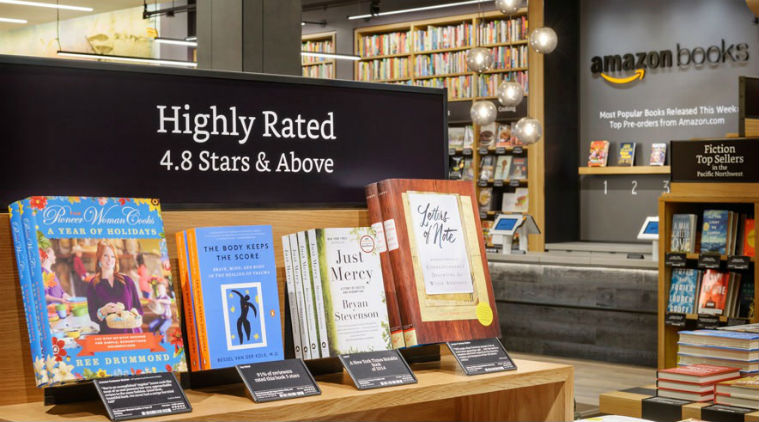Opinion Web and mortar
Amazon opens a physical bookstore — the sort of place it has been accused of putting out of business.

 Amazon Books will be the first physical store from online retail giant (Source: Amazon.com)
Amazon Books will be the first physical store from online retail giant (Source: Amazon.com)
Two decades after online shopping behemoth Amazon irrevocably transformed the book publishing and retail space, endangering the existence of much-loved community and independent bookstores as well as chains like Barnes & Noble, it has gone physical. Reports suggest that the company’s first store, in Seattle, bears more than a passing resemblance, at least aesthetically, to its competitors of yore — brick walls, lots of wood, plush faux leather chairs and, oh yes, shelves upon shelves of books. But, Amazon notes, mindful of its decidedly electronic origins, this is “a store without walls”, a “physical extension of Amazon.com”, basically building on its previous forays into marrying digital to concrete.
In this, the template is not so much, say, Borders, but the Apple Store, those secular cathedrals of overpriced computers and gadgetry where the Apple faithful congregate. The Apple Stores are places both for individual meditation and of communion, and Amazon is clearly hoping to channel that spirit to build its own offline community, and integrate it with its digital base. Books are curated and displays are determined by Amazon.com customer ratings, pre-orders and sales, as well as Goodreads popularity, while highly rated books are prominently showcased.
This also comes at a time when nostalgia can make for excellent business. Plenty of cultural touchstones from the past have made a comeback in the last decade, albeit slightly tweaked to account for modern preferences: Polaroids, turntables, vinyl, rotary dial phones and even the venerable Walkman. Hipster-millenials apparently also prefer the more intimate ambience of a traditional bookshop, where they can browse for hours, read and chat with book-loving staff who make great recommendations. Perhaps what Amazon’s experiment shows is that there is still room for antiquated analog tech alongside cutting-edge digital innovation. And if dealing in nostalgia can help along product integration, well, that’s just the icing on the cake.


